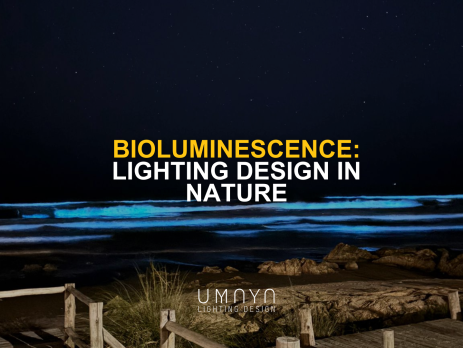
May 9, 2025
Bioluminescence: Lighting Design in Nature
In lighting design, priorities typically include visibility, visual comfort, and energy efficiency. However, understanding the physical behavior of light can lead to more effective and informed design decisions. Luminescence, the emission of light by a material after it absorbs energy, is one such phenomenon that offers practical insight for architectural and lighting applications.
Unlike incandescence, which produces light through heat, luminescence occurs when a material absorbs energy and re-emits it as visible light. This energy can come from light exposure, electrical current, or chemical reactions. Luminescence plays a key role in technologies such as LEDs, phosphor coatings, and light-reactive architectural finishes.
Several types of luminescence are relevant to lighting design. Photoluminescence involves the absorption of photons and their emission at a different wavelength. This principle is used in white LED lighting, where a blue diode excites a phosphor to emit broad-spectrum light. Electroluminescence, which produces light under the influence of an electric field, is the basis of LED and OLED systems. Persistent luminescence, or afterglow, is commonly used in safety signage and emergency markers that remain visible after the light source is turned off.
These mechanisms influence how materials react to different lighting conditions. Some coatings or surfaces may appear neutral under general lighting but become visibly active under specific wavelengths, such as ultraviolet. This behavior can be applied to create dynamic visual effects or support spatial transitions.
From a technical standpoint, luminescence enables more accurate decisions about spectral control, color rendering, and material-light interaction. Reviewing emission and excitation spectra allows designers to choose light sources that enhance specific finishes or surfaces. This is particularly useful in applications such as museums, hospitality settings, and building facades.
Perception of light involves more than brightness. Factors like contrast sensitivity, spectral response, and residual glow influence how people experience a space. Addressing these aspects leads to lighting strategies that better align with spatial function and user needs.

